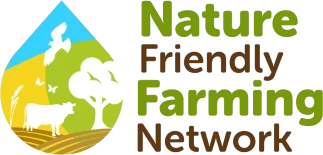NFFN Scotland’s Response
We continue to support the Scottish Government’s vision and agree that ‘high-quality, nutritious food locally and sustainably produced is key to our wellbeing – in economic, environmental, social and health terms.’ We also believe there is no contradiction or trade-off between high-quality food production and producing it in a way that benefits climate and nature.
We will continue to work with the Scottish Government to support and work with farmers and crofters to meet more of our own food needs sustainably and to farm and croft with nature and to ensure that tenant farmers, smallholders, crofters, new entrants and land managers are given equality of opportunity to allow them to play a key role in making their Vision for Agriculture a reality. This echoes the ethos of our members who work with nature to provide food, fibre and other products from our land.
These three publications are a positive step forward. We welcome the direction provided by the route map for wider land management and change, which should give farmers and crofters at the start of their transition to sustainable and regenerative agriculture confidence to begin to consider and plan.
We’re delighted to see the emphasis within the list of draft measures for the enhanced tier on nature-friendly farming and crofting practices. This is a welcome acknowledgement and indication of future rewards for the efforts of NFFN members who have pioneered these practices and hold vast experience in transitioning to sustainable and regenerative agriculture. We would like this brought into the co-design to finalise the list of draft measures and within the design of Whole Farm Plans.
Change within the sector is coming, and we would urge all farmers and crofters not to wait but to start planning for change now. Take up the time-limited National Test Programme’s Preparing for Sustainable Farming support’s three options (finishes end 2024), including:
We welcome the commitment to flexibility and farmer choice and to co-design with the sector to support finalising the list, which will be applied to a future farm support framework. We also welcome the wider consideration of the role of livestock and grassland management in biodiversity. We support the consideration of Greening, Cross Compliance requirements (Good Agricultural and Environmental Conditions (GAECs) and Statutory Management Requirements (SMRs) and the completion of a Whole Farm Plan as part of essential standards for Tier One Base Payment. Their inclusion will be necessary if there is a commitment to a just transition for all farmers and crofters. These standards will support many in beginning the transition to regenerative and sustainable practices without facing a ‘cliff edge’.
Is it enough?
Our NFFN farmer and crofter members are ready for the agriculture transition, but they need more clarity and detail on the funding and weight given to the options outlined in the list of draft measures.
The challenge continues at pace as we’re in a climate and biodiversity emergency. Nature is part of, and absolutely central to, food production. If we don’t urgently restore and regenerate biodiversity in Scotland, producing bountiful, nutritious food without a biodiverse and fertile environment will be impossible.
The draft measures suggested for our sector to meet the 2030 targets (including emission, nature recovery and peatland targets) are expected to happen within three years, between 2027 and 2030. But this timeline is too late to help the sector meet these targets, which is a major cause for concern. A transition period must allow time for farm businesses to plan and adapt while enabling change to occur at a sufficient pace.
Based on this, we need greater investment into an effective transition programme (2023-26) as part of the ‘pathway to reform’ so that farmers and crofters can begin to make changes rather than just planning for them. We do not believe that accessing the three options offered through the PSF or the support currently available will be enough to get the majority, rather than the minority, to start transitioning to sustainable and regenerative food production. We cannot afford to wait.
Suggestions for investment within this Transition Programme (2023-2026):
A three-year rapid, national farmer/crofter-led peer-to-peer knowledge exchange on regenerative and agroecological approaches:
We cannot wait until 2027 for a revised Farm Advisory Service. Potential delivery partners already in place could facilitate more support for all farmers and crofters across Scotland. This could be a collaborative effort between all partners in delivering knowledge exchange and transfer in the sector. This would be based on the model offered through the currently funded KTIF partner Agroecology Project.
Greater investment in and alignment of The Sustainable Agriculture Capital Grant Scheme (SACG) with the list of draft measures published:
The measures outlined for transitioning to regenerative and sustainable farming and crofting will require capital investment by all. Access to capital funding will be essential in ensuring that tenant farmers, smallholders, crofters, new entrants and land managers are given equal opportunity to allow them to play a key role in making the Government’s vision for agriculture a reality. This funding could now be available to all farmers and crofters to help make decisions in the immediate term.
Opportunity for a pro-nature, holistic food strategy through the National and Local Good Food Plans:
Future Good Food Nation national and local plans for procurement should source local food produced by farmers and crofters with established nature and climate-friendly practices and excellent environmental land management.


